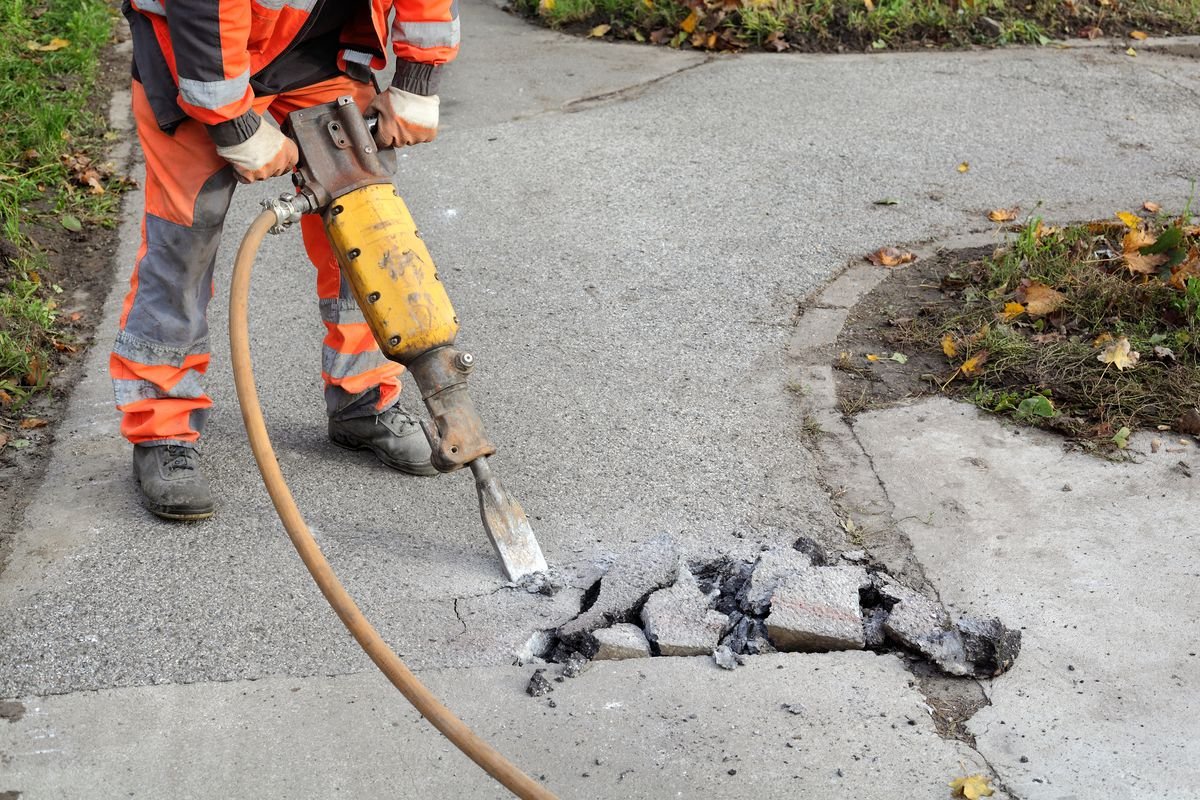Jackhammers are used by builders and other construction industry professionals all over the world because concrete is infamously tricky to break apart. Jackhammers are necessary at any construction site because they rip apart and destroy concrete, asphalt, and other hard surfaces. They are accommodating, but they can be a little challenging to use.
A jackhammer is not for the weak of heart to use. It’s not something you can pick up and figure out how to use right away. Before using a jackhammer, operators must frequently complete training and certification requirements.
Air is used to power the typical pneumatic jackhammer. Engineering was created in the nineteenth century. The engineering is straightforward but ingenious: pressurized air powers a nozzle, which strikes the shaft and has a drill or other bit at the end.
Before using a jackhammer, personal protective equipment must be worn. Jackhammers can be dangerous in the wrong hands of a novice user, and one mistake could result in permanent injury.
Earmuffs or earbuds, a hat, goggles, a respirator, a high-visibility vest, gloves, and metal shoes are some safety equipment you’ll need to wear.
Steps to using a jackhammer
Learn for yourself
Training is necessary for anyone using a jackhammer, whether a professional or a homeowner. Jackhammers must be used with prior knowledge to ensure the user can do so safely and correctly.
location of the compressor
The noise from the air compressor and the jackhammers themselves might be intolerable. However, you can lower the noise level by positioning the compressor aside from your work area.
Verify the jackhammer.
Before and after use, make it a point to check the jackhammer for any flaws or damage. Verify that each component is present, properly fastened, and functioning.
Don’t forget to check the cable for damage and the air ducts for fractures and cracks. You will finally save a significant amount of money by doing this.
Place yourself
Jackhammers are so heavy that they can hurt the people who use them. While using a jackhammer, position it so the body is angled back toward you. By doing this, you can avoid the hammer tip jamming. Additionally, it gives the user more authority if the jackhammer loses control.
Your thighs can raise the jackhammer. This guards you against damaging and expensive back sprains and injuries. Put your hand on the handle to move from one location to another.
Use the proper techniques.
Select the appropriate jackhammer locations for the type of material you anticipate breaking. Never use a point that is broken or damaged.
Purge the area
Avoid using a jackhammer close to animals, untrained coworkers, children, and other bystanders. If anyone approaches, turn the machine off. Jackhammers are not toys.
Verify the architecture
Periodically check the stability of the structure. Relatively weak points may collide, and the entire structure may collapse completely or worse. Verify that the cement doesn’t contain any live wiring or piping.
Take frequent breaks
Whenever using a jackhammer, keep in mind to take frequent breaks. Fatigue brought on by vibration and muscles can result in accidents. Don’t try to complete everything at once. Spread out the work and take it slowly.
Conclusion
Depending on the model and the job they were intended for, jackhammers come in a wide variety. Powerful tools include a pneumatic jackhammer. Light, moderate, and heavy models function best for the appropriate job type. However, in addition to those divisions, there are additional ones based on the jackhammer’s power source.
